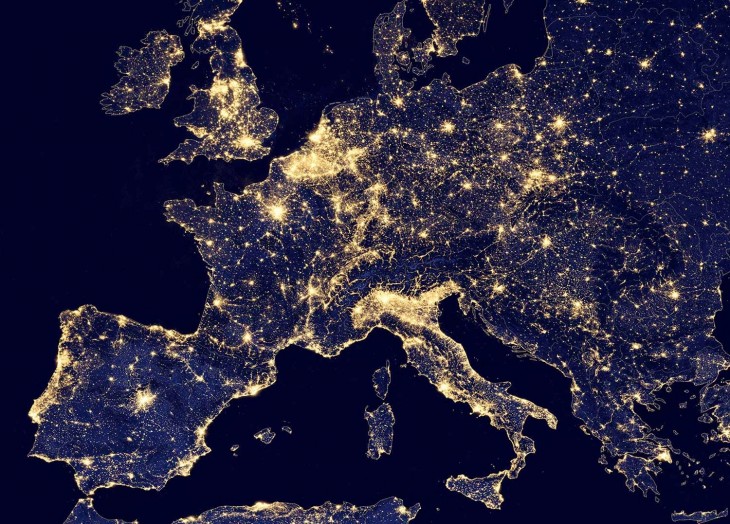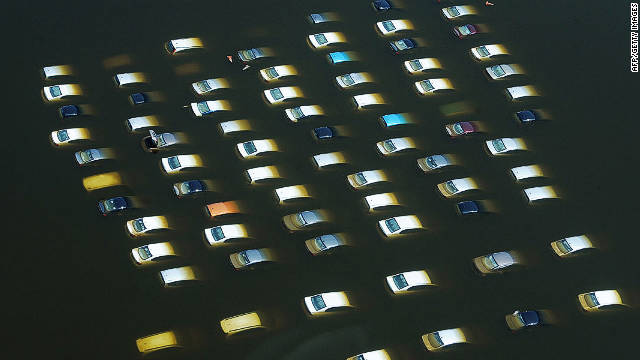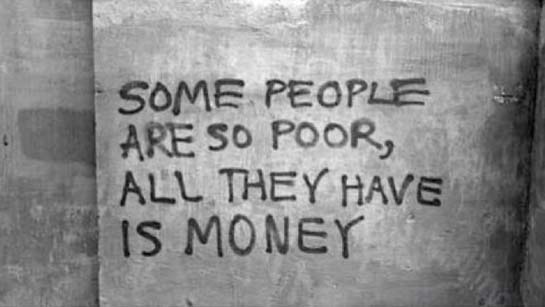Comparing Germany to Bulgaria and especially Berlin to Sofia is kind of difficult. The one thing they have in common is that both cities are capitals of countries in the European Union.
Berlin possesses unique cultural and architectural qualities, strong forces of social inclusion and exceptional possibilities for economic development. It has become a center of knowledge and a source of growth and innovation.
At the same time Sofia suffers from demographic problems, social inequality, social exclusion of specific population groups, a lack of affordable and suitable housing and environmental problems. In Sofia people want to become international but they are heading in the wrong direction. One of the challenges we confront, in particular sustainability, requires a change of lifestyle. This goes beyond switching off the light or not using water. This goes through a much more sophisticated and political process that will be very conflicted. The city governance role is to create conditions for changes in habits, lifestyle and modes of behavior.
Germany is a federal republic facing a system based upon democratic rules and institutions in which the power to govern is shared between national and provincial/state governments. Due to this political system, Berlin with its 4.5 Million (about 5%) inhabitants will never get overpopulated even though Germany has the largest population in Europe with almost 82 million inhabitants. I admire the federal system of Germany because the concentration between the important institutions is distributed all over the country. Berlin is the political center and Frankfurt is the financial center of Germany. All major insurance companies are located in Munich, and Hamburg holds the biggest harbor. These are only examples to show that not everything is focused in the capital city. Due to this system of sharing the importance of cities, Germany possesses the best infrastructure in Europe. When you look at a satellite picture of Germany it is difficult to point where the capital is actually located. If you look at France for example it is quite easy to tell which city is the most populated one.
The Republic of Bulgaria has a population of 7.4 million and almost 25% of the country’s whole population is based in Sofia. Every important institution is located there. Bulgaria has the lowest per capita income in the European Union, while Germany has one of the highest.
Furthermore, the expansion of both cities is quite different. Sofia expanded from the central area and owns only one major center. Berlin however suburbanized the villages around it to create a city. Because of this and the fact that that Berlin was separated after the Second World War, it has three major centers and each district has its own minor center, therefore you would never feel like a place is overpopulated. In this polycentric city even the socially deprived districts are livable. Take for example “Prenzlauer Berg” or “Kreuzberg”. Both were socially disadvantaged districts, however nowadays both districts turned into hot spots for artists and designers. A lot of small coffee shops, bars and restaurants were created not only to attract tourists but also to create a comfortable place for the people living there. Berlin became one of the most favorite cities for Start-up companies. The capital is constantly changing and it is still really cheap to live there in comparison to other German cities.
However, Berlin is also facing some issues. There are many poor, homeless and socially deprived people living on the street. On the other hand, property prices have risen by 50% in the last ten years. A huge amount of people from eastern european countries, move to the German capital in hope of finding a job and getting more opportunities for a better life, but there is a lack of apartments, so a lot of these people end up living on the street. Berlin has to solve the apartment issue, one solutions being to heighten the buildings. Most of the apartment buildings have only five floors, there are no skyscrapers, so they have to provide more living spaces on top of the existing buildings for the people who want to live there. Another thing is that Berlin would face a huge problem, if the new airport does not open soon. Tegel and Schönefeld are much too small to handle the huge amount of passengers each year. If Berlin would like to keep its arising positive image, it has to provide a solution to open the new airport as soon as possible.
Sofia used to be in the same position as a European city, such as Prague and Budapest, but due to a wrong policy of privatization after 1989 it took the wrong direction. Bulgaria was not prepared to enter the European Union and that is why today is unfortunately the worst progressed country in the whole Union. Bulgaria has a unique topography with beautiful mountains, rivers and a long coastline to the Black Sea. Sofia has the potential to be a European capital with a wonderful ski resort bordering the city’s outline. Nevertheless only wrong investments were made to ruin the beautiful cities instead of changing them for the better. Take for example Sunny Beach, a touristic city near Burgas located at the Black sea. This was one of the most green and beautiful resorts in Bulgaria. Today when you look at it, you can see an immense density of hotels and holiday villages. This city is totally transformed into a seasonal vacation and attraction point for tourists. This touristic city borders with the ancient town of Nessebar. Nessebar’s abundance of historic buildings prompted UNESCO to include it in its list of World Heritage Sites. How is it possible to create an absurd place for vacation next to one of the most important historical places in Bulgaria? This is only an example, how a wrong investment policy without any master planning can destroy the vision and the image of a whole region.
Sofia, a city with an area of 492 km2, contains seven huge shopping malls all located around the city’s center. Most of these malls end up never being used, causing them in the end to file for bankruptcy. This is an example of wrong way to build and to lead a city. In my opinion the power of taking decisions regarding all architectural projects should not be given to just one person like chief architect of the city. In Berlin there is not such thing as ’’chief architect’’, but instead there is a whole team of professionals who are equally responsible for the decisions strictly regarding the Town and Country Planning Code. That’s the way it should be done in Bulgaria as well. Unfortunately in Sofia politicians have indirect partnerships with local construction and investment companies, which makes it hard for architects, outside that circle, to get the opportunity to get involved in larger scaled projects. Open architectural competitions should be introduced where a jury of professionals take the best suited proposal for a given project.
The problems of Bulgaria and Sofia in general, go far beyond the wrong investments made in the past. The whole ‘’system’’ does not work. The old generation is being completely forgotten and excluded. The highest pension in Bulgaria is about 350 Euro a month. How can you survive with that amount? You cannot even afford the basic health insurance. Former beautiful villages have now become ghost towns because the people leave and search for work in nearby cities. Due to the disappearance of the primary and secondary sector, people cannot survive in these villages. Bulgaria should start reactivating the primary sector, not only importing but start exporting their own goods. Also the industrial sector (the secondary sector) of Bulgaria has to be re-launched and start producing again. This is the only way to make people stay in their small cities or villages and prevent the overpopulation in Sofia and other larger cities.
How could Bulgaria be accepted as an equal member of the European Union when the majority of people can hardly survive. By entering the Union, life in general became much more expensive while the salary remained the same. The standard of the countries in the European Union should match in order to create one great Europe with its ’’states’’. Otherwise there will always be the prosperous countries like Germany and France pulling the poor countries like Bulgaria and Romania. With these conditions of poverty the people do not believe in their country and do not feel proud of Bulgaria. Without the trust of the people you cannot create a future oriented country. When you walk the streets of Berlin and ask people which is the best city for them; 80% of them will say “Berlin, of course”, when you ask inhabitants of Barcelona you will hear the same answer. I tried doing the same experiment in Sofia and not even one person gave me a positive answer. How can we change that? How can we make the people proud of their home cities and their country? It is not impossible. Nelson Mandela reached this connection of the people due to the Rugby World Cup in 1995 hosted in South Africa where South Africa won. Sport is a great way of making people proud of their country. Architecture can achieve the same result. In Medellin for instance the creation of emblematic architecture like the Spanish Library, made the people identify with, and feel proud of their city. People have to trust and to work things through together, otherwise a system cannot operate. In Sofia buildings are constructed on the assembly line without regarding the infrastructure or the surroundings. There is no planning at all and architects and investment companies look selfishly how to get the most money out of a project. We have to look at a bigger scale to find the best suited design for an area. Architects should discuss together and play in the same team to create the most advanced master plan for an area and stop working against each other. With architecture, we can to change the harsh separation between rich and poor, furthermore we can also build camps for refugees from countries in conflict, like Syria. We need to provide a better life for them in our country. Nowadays the government puts them in very small flat sharing communities without any work prospects. These people do not invade the country by choice, they are forced to leave their roots and their houses in order to save their families.
One of the biggest problems I see is that slowly the young generation and the professionals who could actually change the city, leave due to bad payments and a lack of work. These people are attracted by higher salaries from other countries in Europe and the rest of the world. How can we attract these people to return and help changing the country for the better? Without the young smart generation it will be impossible to catch up and actually succeed globally. One important point should be to create innovative and advanced technological parks to attract them and gain their trust in our country’s opportunities in order to to make this country efficient. In Tokyo for example, self sufficient barriers of the metro were created by using the people’s behaviors. When walking through this barrier, energy was created by every footstep people were taking. This produced energy was enough to feed this system. I like the idea to create sustainable and advanced architecture or design without making the people change their behavior. On small scale projects we should capture sun energy during the day and use it to fill the house with energy. These are only example of a possible approach but the key point is that in Bulgaria an advanced team of professionals with different professions which believes in creating a future oriented capital has to be formed. The politicians, especially the majors of the cities have to be key figures in that team and take a huge responsibility to make this change really happen.
As architects we cannot change the world, we can only point out the right way towards the future. Architects alone cannot do anything without having all of the people beside them. Together we should start acting like a well coordinated team that cares about designing a futuristic city. In my opinion that this is the only way to rescue Sofia, and hopefully Bulgarians from all over the world will start to head back. But first someone has to start that process of change and maybe others will follow.
photo: http://www.blue-marble.de/nightlights/2012





